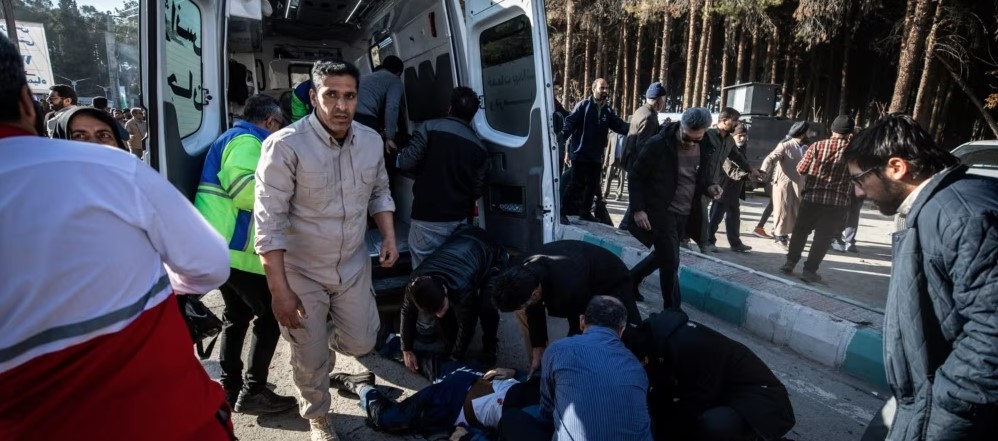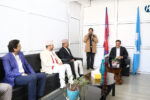Iran said Wednesday that 95 people were killed and dozens more wounded in explosions that rocked a memorial for a prominent Iranian general killed in a 2020 U.S. drone strike.
One Iranian official called the blasts a “terroristic” attack that occurred near the grave site of General Qassem Soleimani, the one-time head of the Revolutionary Guard’s elite Quds Force.
Initially, Iran said 103 people were killed in the two blasts. Later, officials said some names had been counted twice and lowered the death toll.
The explosions occurred in Kerman, about 820 kilometers southeast of the capital, Tehran. No group immediately claimed responsibility.
Iran has blamed the United States and Israel for the attack.
A U.S. State Department spokesman said Washington expresses “our sympathies to the victims and their loved ones who died in this horrific explosion” and stressed that the U.S. was not involved.
“The United States was not involved in any way. And the suggestion to the contrary is ridiculous,” spokesman Matthew Miller told reporters Wednesday. “And No. 2, we have no reason to believe that Israel is involved in this.”
Bombs reportedly set off remotely
Iran’s Tasnim News Agency, quoting what it called informed sources, said “two bags carrying bombs went off” at the site.
“The perpetrators … of this incident apparently detonated the bombs by remote control,” the agency said.
The ISNA news agency quoted Kerman Mayor Saeed Tabrizi as saying the bombs exploded 10 minutes apart.
Iran has several foes who might have carried out the attack, such as exile groups, militant organizations, and state actors. Iran has supported Hamas in its nearly three-month war with Israel, as well as the Lebanese Shiite militia Hezbollah and Yemen’s Houthi rebels.
Authorities said some people were injured while fleeing the initial explosion. A delayed second explosion is often used by militants to target emergency personnel responding to the scene, to inflict more casualties. People could be heard screaming on state TV footage.
In early 2020, then-President Donald Trump said he ordered the killing of Suleimani because the Iranian “was plotting imminent and sinister attacks on American diplomats and military personnel, but we caught him in the act and terminated him.”
The U.S. drone attack at Baghdad’s airport was assailed at the time by then-Iraqi Prime Minister Adel Abdul Mahdi, who called it “a brazen violation of Iraq’s sovereignty and a blatant attack on the nation’s dignity.”
Soleimani considered national hero
Soleimani was the architect of Iran’s regional military activities and is considered a national hero among supporters of Iran’s theocracy.
He was widely regarded as a hero for his role in defeating the Islamic State jihadist group in both Iraq and Syria.
He helped secure Syrian President Bashar Assad’s government after the 2011 Arab Spring protests against him turned into a civil, and later a regional conflict that continues today.
Relatively unknown in Iran until the 2003 U.S. invasion of Iraq, Soleimani’s popularity and mystique grew after American officials called for his killing because of his role in arming militants with roadside bombs that killed and maimed U.S. troops.
In the years before the U.S. killed him, Soleimani had become Iran’s most recognizable battlefield commander, ignoring calls to enter politics but growing as powerful, if not more powerful, than the country’s civilian leadership.
Memorials to Soleimani on the anniversary of his death have drawn large processions in the past. At his funeral in 2020, a stampede broke out, and at least 56 people were killed and more than 200 were injured as thousands thronged the procession.
VOA









Comment